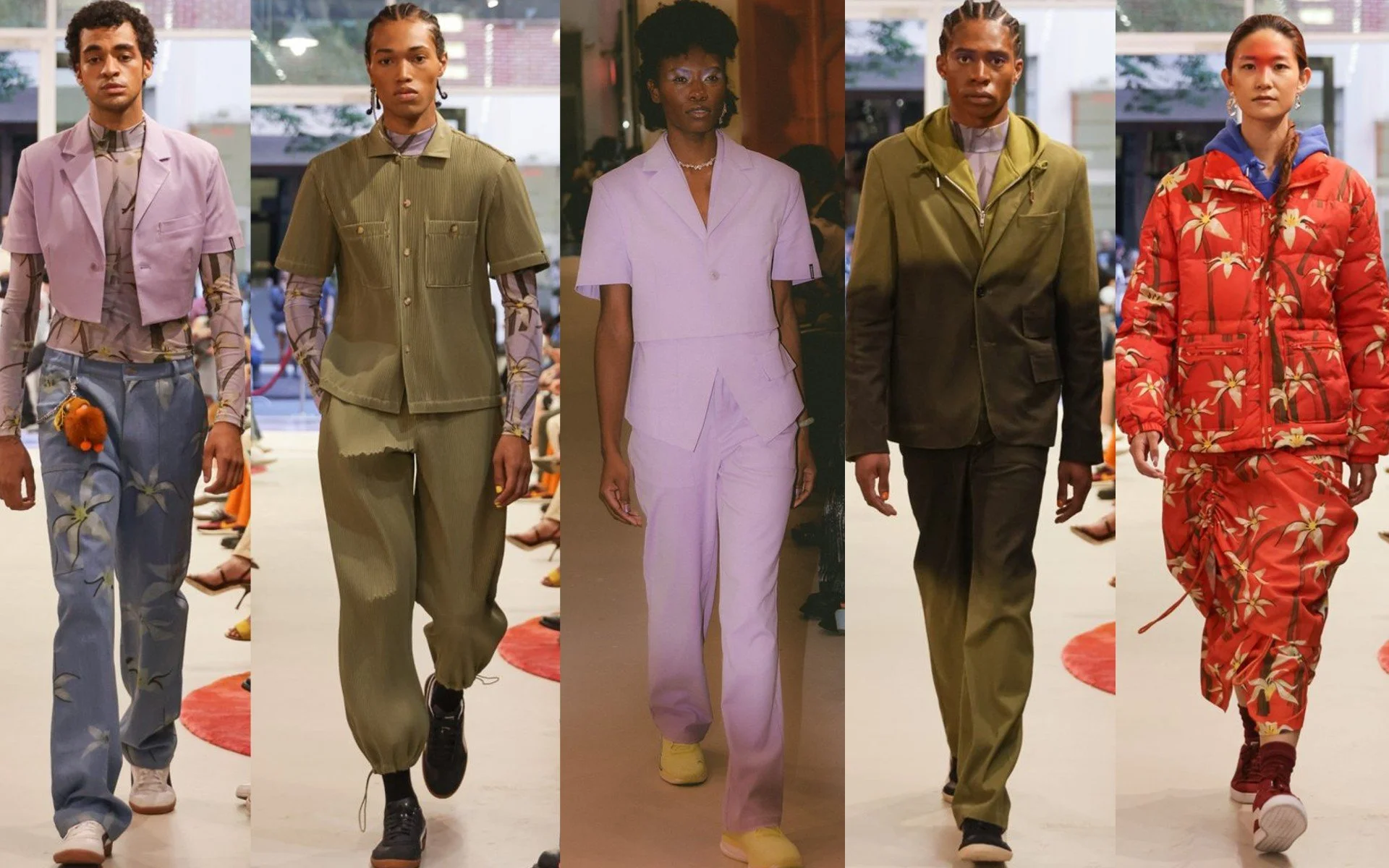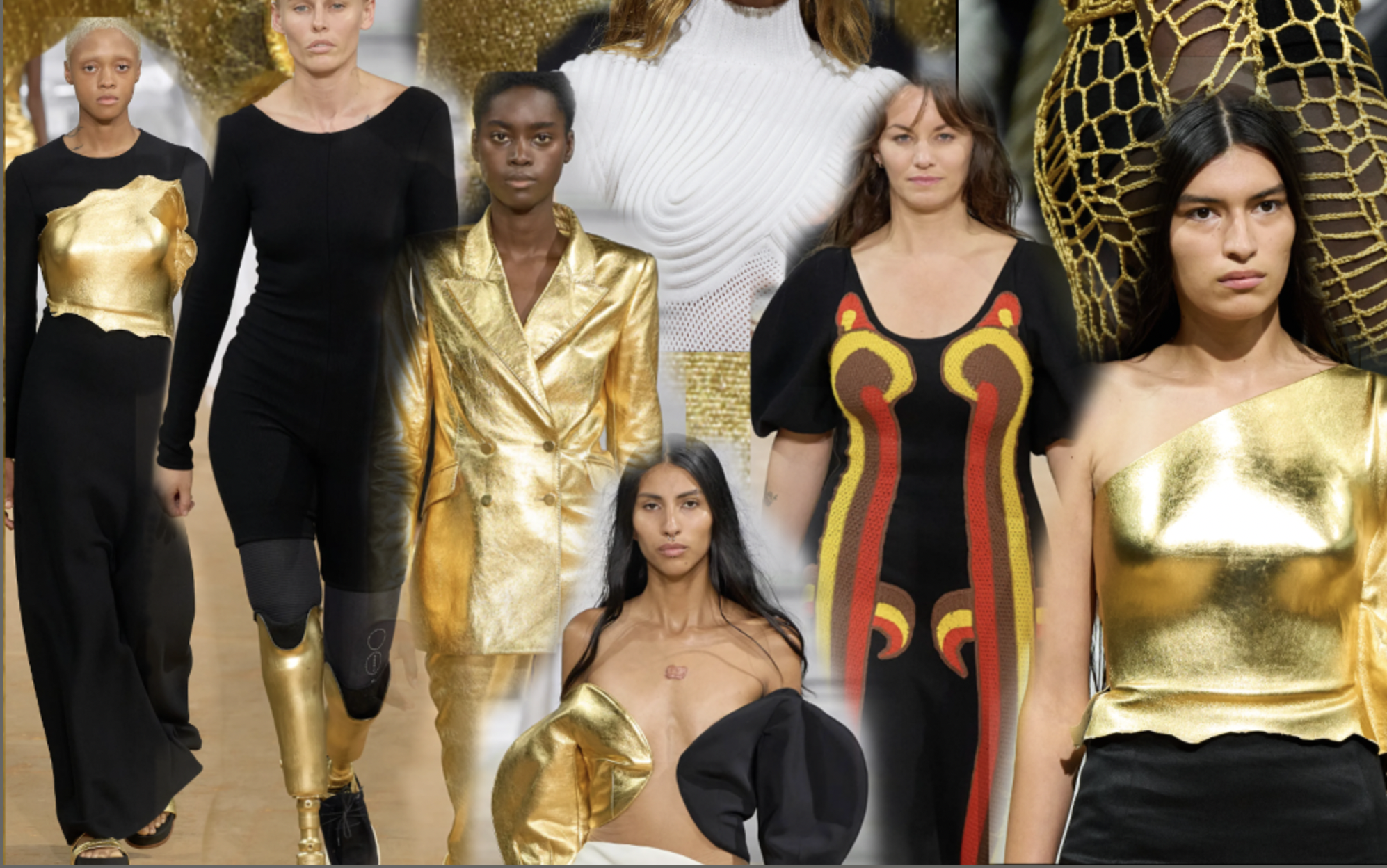The driving force behind the fashion industry has always been feeding the needs of consumers, and of course there’s a small dash aspiration thanks to our love for pretty things. Unfortunately, the fashion and textile industry (which includes clothing, leather goods and footwear) is “responsible for an estimated 2-8% of the world’s greenhouse gas emissions, consuming 215 trillion liters of water per year, and accounts for approximately 9% of annual microplastics losses to the oceans”, according to the UN Alliance for Sustainable Fashion.
So, while fashion editors, buyers, and enthusiast jet-set to the world’s fashion capitals to enjoy the shows during fashion month, sustainability is often the furthest thing from their minds. Despite many choosing to ignore sustainability and treating it as an invisible factor, it is not invisible to us all. Hence, I wanted to spotlight a few designers and brands who presented conscious collections during NYFW. These brands have decided to take a stance against unethical and unsustainable practices without US government legislation. They are committed to working on reducing their negative environmental and social impacts with hopes of turning the fashion industry into a driver of positive global change.
The following designers have committed to contributing to the fashion world’s value chain in a way that will achieve global sustainability and carbon neutrality. What I really love is that these designers rendered measurable change to their productions by implementing ethical and sustainable practices in order to yield meaningful environmental solutions. We will see how some designers took pre-sell orders, manufactured small runs of inventory, and eliminated bulk ordering of their collections. Others used renewable and clean energy resources designing sustainable collections with less impact on the environment. And lastly, some consolidated fashion events, shows and show locations. See the designers below and my favorite looks from each collections.
Angel Chang
Angel Chang is a self-proclaimed “zero carbon” womenswear designer. Her brand is also climate neutral certified direct to consumer. During the pandemic most designers were forced to use unusual approaches to developing their collections; thus Angel’s SS23 collection is extremely unique. This collection is over 10 years in the making. It’s a collaboration involving Chinese artisans and tribes from rural China. Her SS23 collection is extremely distinct because it was created using only the bare hands of the makers following cycles of nature without electricity and harsh chemicals. All fabric was stained using plant-based dyes from gather leaves and petals that had fallen naturally.
BOBBLEHAUS
BOBBLEHAUS is a genderless, sustainable brand that “brings together global Gen-Z perspectives on fashion, music, art, design, and technology”. Founders Ophelia Chen and Abi Lierheimer ensure that their designs are made sustainably by using deadstock, recycled fabrics, and renewable materials such as Lyocell fibers extracted from sustainably grown wood. The brand is socially sustainable as well as environmentally. Their workplace condition aligns with human rights, ILO conventions and labor laws. I also want to mention that they collaborated with an organization called One Tree Planted, which plants 10 trees for every item purchased.
BruceGlen
This color loving duo returned to NYC to show their collection. Identical twins, BruceGlen’s SS23 collection is full of metallic leathers, psychedelic prints and colors, and unique designs all with a western flair. Designers credit the inspiration for the collection on a thrifted cowboy shirt.
In creating this collection, the brand partnered with Resonance Brands to implement a sustainable manufacturing system using digital printing only. They don’t use any batch-dyeing or screen printing, opting to instead use natural fibers which are 95% biodegradable. It should be noted that the brand is socially conscious by using ethical practices such as simply paying all staff above a living wage.
Collina Strada
Collina Strada is a beautiful, socially sustainable brand that works to set itself apart from the rest by creating necessary ethical sensibilities for social issues. Engraved in the character of the brand is transparency and its aspiration to become fully sustainable. The collection is manufactured in New York and made using an organic fiber called rose sylk that’s made from rose bushes and stems, deadstock fabrics, and recycled cotton.
Studio 189
Studio One Eight Nine is a beautiful “made in Africa” brand that works with the artisanal community there through partnerships with UN ITC Ethical Fashion Initiative and NYU Stern School of Business. These collaborations create opportunities for makers on the continent to gain skills and trainings, become further educated, and thus be even more EMPOWERED. The African-inspired clothes are made using local plants and herbs which creates natural dyes. Recycled cottons and glasses are used as fabrics, as well as pineapple fibers used to make pineapple pinatex leather.
Gabriela Hearst
Gabriela Hearst showed an incredible collection during NYFW. Her SS23 offerings included beautiful knits, crochets, constructed jersey dresses and molded, gold leather insets, pantsuits, and dresses. Some materials used were natural and repurposed from deadstock. The boots were made using biodegradable EVA soles.
Gabriela Hearst is a brand that’s not only environmentally conscious, but is socially sustainable as well. Her runway casting included a diverse group of women presenting in all shapes, sizes and abilities. Female empowerment is woven in the brand’s DNA, thus for models Gabriela tapped some of her friends who works as advocates and activist fighting for human rights, women’s health issues and environmental solutions.









